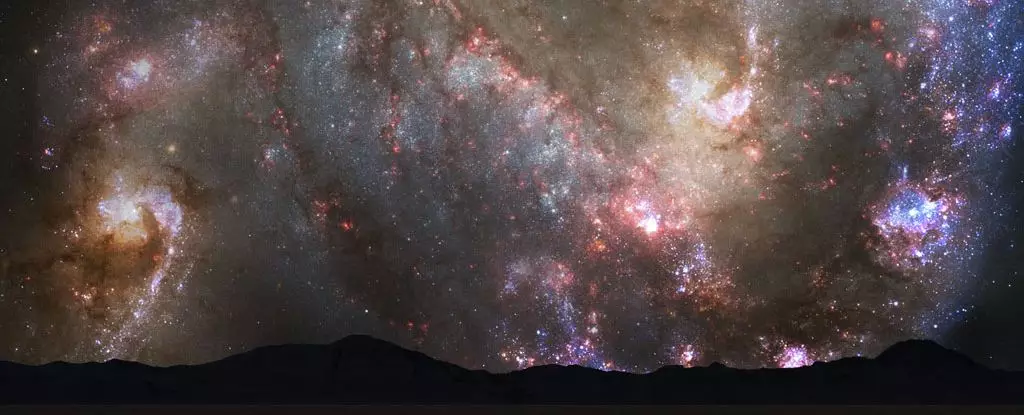The concept of our Milky Way galaxy colliding with its neighboring Andromeda has long been a staple of astronomical predictions. For years, scientists have anticipated a seemingly unavoidable merger, dubbed “Milkomeda.” However, recent studies led by astrophysicist Till Sawala and his team from the University of Helsinki have challenged the fatalistic narrative surrounding this cosmic event. Their research highlights a compelling truth: the future of our galaxies is anything but set in stone.
This latest examination of potential interactions between the Milky Way and Andromeda suggests that the likelihood of a collision over the next ten billion years is roughly an even split—about 50%. Such findings indicate an exciting possibility: rather than a guaranteed reunion, these two colossal structures may very well pass each other by like ships in the night, leaving us to contemplate the marvels of the cosmos without catastrophic implications.
Revisiting Historical Predictions
The work of Sawala and colleagues didn’t just revisit prior predictions but also expanded upon them. While acknowledging established forecasts, they introduced a complex framework that accounts for additional factors affecting these galaxies. Previously, simpler models led many to conclude that a collision was nearly inevitable. Backed by the latest data from the Hubble and Gaia telescopes, the team employed simulations to scrutinize the scenarios that shape the destinies of the Milky Way and Andromeda.
By considering the roles of other significant galaxies within the Local Group, including the Triangulum and the Large Magellanic Cloud, Sawala’s team significantly altered the predicted outcome. The complexity of these interactions offered a fresh perspective, suggesting that the cosmic environment itself plays a pivotal role in determining whether or not these galaxies will collide.
The Unpredictable Cosmos: Insights from Advanced Simulations
Sawala’s work reflects a monumental shift in how scientists might approach the study of galactic dynamics. Traditionally focused on the past and the factors that led to our current cosmic arrangement, this new research ventures into a realm often considered speculative. By creating simulations that included various combinations of massive Local Group members, the researchers demonstrated that the presence or absence of just one galaxy could drastically shift the probabilities concerning future mergers.
In their calculations, they discovered that removing the Triangulum galaxy decreased the probability of a collision to one in three, while its inclusion pushed the chance to two in three. This finding underscores an essential truth of astrological research: the future may harbor dimensions of uncertainty we have previously underestimated. The implications of these insights extend far beyond mere percentages; they challenge our understanding of galactic evolution in a highly interconnected universe.
Future Instruments and Ongoing Research
The message from Sawala and his team echoes with optimism tinged with caution. As our observational technology continues to improve and new instruments come into play, scientists anticipate gaining an even clearer picture of the motions and masses of galaxies in our Local Group. This evolving understanding will refine our ability to predict cosmic behavior with greater accuracy and nuance.
Sawala himself expressed a lingering curiosity about the potential influences of the cosmic environment on the future encounters between galaxies. As research progresses, our grasp of the factors facilitating or hindering collisions will become more sophisticated, launching us into an era of enhanced comprehension regarding galactic evolution.
Embracing the Cosmic Mystery
Ultimately, the future of the Milky Way and Andromeda is far from determined. Encouragingly, recent findings remind us that the cosmos thrives on variability and surprise. As we deliberate the evolving dynamics of our galactic neighborhood, it becomes clear that uncertainty does not equate to chaos. Instead, it reflects the richly complex behavior of celestial bodies as they interact over vast expanses of time.
With a balanced understanding of these possibilities, we can approach the vastness of space—its immeasurable wonders and the intricate dance of its galaxies—with both enthusiasm and respect for its unpredictability. Scientific exploration thrives on questioning assumptions and generating new hypotheses, ensuring that our cosmic journey promises infinite surprises along the way.


Leave a Reply